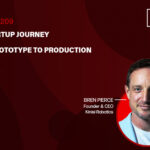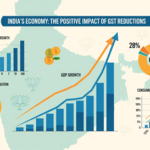Too many agency websites look like service menus. Strategy. Content. Events. None of it says why it matters. Build your brand around taste, values, and your creative passion points. You don’t need a massive budget. A zine, an artist collab, or an event with a specific edge can do the job.
The Sunshine Company does this beautifully. Its mantra says it all: Don’t interrupt the things people love—be the thing people love. That’s not just a slogan, it’s a whole strategy.
Think in headlines, not outputs. Great editorial starts with a hook. So should your work. What’s the idea behind it? Why does it matter now? If it wouldn’t get picked up by the culture section, ask yourself: Why are you making it?
The Gathery is a great example. The work is nimble, socially literate, and editorially sharp. No surprise—it was founded by former editors at Paper, so it moves with instinct and timing. It brings a magazine sensibility to everything from brand tone to cultural context.
Move like media. Fast, raw, relevant. If your take on a trend takes weeks to add to your deck, it’s already dead. Share your thinking. Publish your work. Add to the conversation in real time.
Made Thought does this well, and its bulletin is a master class. It’s sharp, personal, and thoughtful. That kind of thinking builds trust before a pitch even starts. Another exemplar, Matte Projects has a dedicated section on its website for happenings and inspiration.
Be playful. Seriously, media brands know how to play. They experiment, try things out, and follow curiosity just to see where it leads. That sense of creative freedom is magnetic, and agencies could use more of it. Who are you trying to attract? What content, energy, would they want to engage with?
Take Slaps Creative in Barcelona. When it opened its new office, it threw a block party with the invite spread across its social channels. DJs, dancing, “free booze and beats,” community energy. That’s the kind of studio launch people remember. Agencies like Hot Sauce in London are showing how that energy translates; they’re sharp, culturally intuitive, and never shy of a strong POV. It’s no surprise its audience is growing as fast as its client list.
Brands want to work with agencies that make culture, not just wrap content around it. Find the ones with their own voice, their own taste, their own community—that are publishing, participating, and platforming the right people. And when you do, trust them. The work that cuts through might break from corporate-approved copy. Sometimes it feels a little rougher, a little riskier, more like real life. That’s the point. Let it breathe.




























